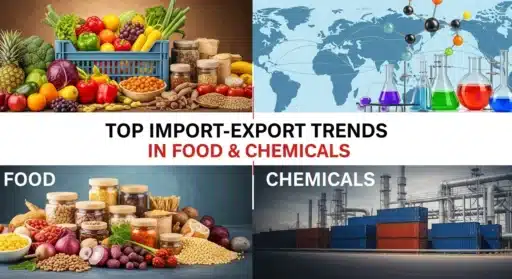Turning Industrial Waste into Agricultural Wealth
Nutrient availability has always played a key role in agricultural success, but farmers and agribusinesses have dramatically changed how they deliver those nutrients over the past few decades. The Green Revolution introduced conventional fertilizers to Indian farms, but today’s farmers focus on precision, prioritize sustainability, and demand bespoke solutions. This is where specialty fertilizers come in—nutrient blends designed meticulously to meet specific plant requirements in varying agro-climatic conditions, often incorporating byproducts like Potassium Permanganate to enhance nutrient efficiency and soil health.
What is particularly fascinating for today’s agripreneurs and industrialists is that these high-efficiency fertilizers can be produced not just from raw materials but also from byproducts of chemical processes like Potassium Permanganate (KMnO₄) production. This trend is emerging due to its dual benefits, which are resource recycling and developing value-added agribusiness.
This article delves into the intricacies of setting up a specialty fertilizer business using industrial byproducts such as Potassium Permanganate. You, the startup founder, chemical entrepreneur, or even a B2B manufacturer, will find a thorough opportunity-analysis, market growth predictions, technology and process insights tailored for you.
What Are Specialty Fertilizers and Change In Focus Towards Them
Manufacturers develop specialty fertilizers to target specific crops, soil types, or plant growth stages. With tailored nutrition, they are more efficient and effective for horticulture, and floriculture, as well as precise greenhouse and organic farming. Unlike bulk fertilizers that supply basic Nitrogen, Phosphorus, and Potassium (NPK), manufacturers craft specialty fertilizers to meet specific and intricate crop requirements.
In practical terms, these specialty fertilizers could be in the form of chelated micronutrient, water soluble fertilizers (WSF), slow and controlled release forms, and bio-enhanced nutrient carriers. Compared to other options, these fertilizers have a high nutrient use efficiency (NUE) and low application volumes. They further have lower environmental impact. Primary advantage stems from their enhanced absorption by plant roots and leaves leading to quicker and more noticeable paybacks in crop yield, color, disease resistance, and soil structure.
This is how Indian farmers and the agricultural industry are modernizing. Farmers are now using modern irrigation methods, greenhouses, and high-export-quality crops. This creates a greater need for high performance and residue-free fertilizers. The adoption of drip irrigation systems also creates more opportunities for water-soluble vitamins and micronutrients through fertigation, or nutrient supply through drip irrigation. To further assist this change, the Indian government is also supportive of these changes and is providing them with policy advice, FCO changes, and even subsidies on WSFs as well as micronutrients.
Related: Potassium Permanganate Business: Profitable Opportunities Await
Industrial Byproducts and The Impact of Potassium Permanganate on Fertilizer Innovation
KMnO₄, Potassium Permanganate, has many uses such as in water treatment, chemical synthesis, and pharmaceuticals. It is a strong oxidizing agent and assists in eliminating organic impurities from water, as well as aiding in the transformation of compounds in organic synthesis. Because of this, it has many industrial applications and uses, but these industrial applications also lead to considerable byproducts— many which contain valuable elements such as manganese and potassium.
Manufacturers can turn these byproducts into specialty fertilizers with the right processing techniques. In a circular economy model, manufacturers can transform these waste streams into micronutrient-rich fertilizers—provided they meet safety and environmental compliance standards—instead of treating them as disposal liabilities.
Manganese is critical for plant processes such as photosynthesis and nitrogen assimilation, and potassium controls water usage, enzyme activity, and fruit formation. Their deficiency in the Indian soils, particularly for high-value crops, makes them an ideal target for entrepreneurs seeking to create nutrient blends based on KMnO₄-derived compounds.
The process usually includes the recovery of manganese residues as Manganese Sulfate (MnSO₄) and extraction of potassium salts for macro-element inclusion. When manufacturers carefully blend these compounds with compatible minerals and carriers, they produce stable, highly effective specialty fertilizers suitable for foliar spray, soil application, or fertigation.
Demand Landscape and Growth Forecast for Specialty Fertilizer Manufacturing in India
The specialty fertilizer market is expanding rapidly in India, spurred by progressive farmers, exporters, and cooperatives focused on horticulture. The recent years have seen an accelerating shift away from commodity fertilizers, especially with increasing concern on soil health, leaching, and sustainability.
Research shows that India’s specialty fertilizer sector is likely to be growing at a 12% to 15% CAGR with particular growth in the micronutrient and water-soluble segments. Industry analysis shows that the micronutrient sector will accelerate, with potassium and manganese blends set to dominate the market.
Specialty Fertilizer Market Forecast: India (2025–2029)
| Year | Total Market Size (₹ Cr) | Micronutrient Segment (% Share) | Water-Soluble/Chelated Segment (%) |
| 2025 | ₹14,800 | 24% | 35% |
| 2026 | ₹17,200 | 26% | 36% |
| 2027 | ₹19,500 | 28% | 37% |
| 2028 | ₹22,200 | 30% | 39% |
| 2029 | ₹25,000 | 32% | 40% |
Government financial support for micronutrient products, novel formulations, export-oriented crop production, and the adoption of Precision Agriculture are driving this growth.
Applications: Where Potassium and Manganese Fertilizers Make an Impact
Fertilizers derived from KMnO₄ byproducts, especially those rich in potassium and manganese, have proven effective for several high value crops. In mangoes, bananas and papayas, potassium plays a key role in sugar translocation and uniform ripening, while manganese is essential for chlorophyll formation and enzymatic balance.
In horticulture, flower crops benefit from sprays with the micronutrient MnSO₄. This treatment enhances bloom density and offers protection from petal burn. High-value export crops like grapes and pomegranates also need specially tailored nutrient schedules, particularly for potassium-manganese ratios that aid in color development and help combat diseases.
In greenhouse or hydroponic systems, precise application of microminerals through foliar sprays or with water-soluble fertilizers is crucial. Therefore, modern farming systems benefit greatly from liquid or soluble formulations based on KMnO₄ derivatives.
Related: How to Set Up a Profitable Potassium Hydroxide Manufacturing Unit
How to Create a Specialty Fertilizer Unit From Potassium Permanganate Byproducts
Manufacturers use Potassium Permanganate byproducts to craft specialized fertilizers through processes like blending, chemical refining, and nutrient stabilization. Depending on the production volume and the desired form of the final product—whether solid granules, liquid concentrates, or WSF powders—manufacturers can set up the system as either semi-automated or fully integrated.
Overview of the Steps
The first step is collecting potassium permanganate streams from sludge deposits, then analyzing these for certain nutrients, especially manganese and potassium. After this, unwanted matter is removed from the solution by controlled leaching and precipitation.
Sulfuric acid leaching is used to extract manganese by transforming solid manganese residues into manganese sulfate solution, which is filtered and concentrated. Usable potassium salts are also recovered through crystallization and precipitation techniques on potassium residues.
The raw materials undergo purification prior to blending with carriers like bentonite, gypsum, or even amino acid complexes. Depending on the target crop, micronutrients such as zinc, boron, or iron can be added. The desired form can then be achieved through spray drying or granulation. Liquid formulations are packaged after undergoing homogenization and pH balancing.
Manufacturing Key Steps
- Source testing and byproduct recovery
- Chemical leaching and filtration
- Nutrient concentration and quality assessment
- Ratio-based nutrient ingredient blending
- Physical transformation through granulation, drying, or solubilization
- Compliance verification alongside quality testing
- Batch labeling and final packaging
Process safety and efficiency is streamlined by proper equipment selection, including chemical-resistant reactors, centrifuges, and granulators.
For more information check our Project Reports
Opportunities for Entrepreneurs and Agribusiness Startups
The specialty fertilizer industry presents a strong opportunity for entrepreneurs, especially those who are already in the chemical or waste recovery business. Setting up a fertilizer manufacturing unit using KMnO₄ byproducts allows them to diversify into agri-inputs while minimizing raw material costs.
For industrialists operating textile, water treatment, or permanganate-based production units, this approach adds vertical integration and improves the overall sustainability profile of the business. For agri-startups and agrochemical brands, contract manufacturing of custom blends can offer new revenue channels.
Moreover, the growing push for local production of agri-inputs under schemes like “Atmanirbhar Krishi” makes this segment eligible for government support, fast-track approvals, and subsidies for micronutrient formulations.
How NPCS Can Support You in Setting Up a Specialty Fertilizer Business
Entrepreneurs venturing into specialty fertilizer manufacturing need detailed technical, operational, and regulatory guidance to ensure feasibility and compliance. This is where Niir Project Consultancy Services (NPCS) plays a pivotal role.
NPCS provides specialized support to agrochemical and industrial entrepreneurs through:
- Market Survey cum Techno Economic Feasibility Reports, which help evaluate the commercial potential of fertilizer manufacturing projects.
- Detailed insights into manufacturing processes, raw material sourcing, plant layouts, equipment selection, and process flows.
- Practical guidance on assessing plant feasibility, navigating regulatory compliances, and developing go-to-market strategies.
With decades of experience across agro-industrial domains, NPCS is an ideal partner for entrepreneurs seeking to build a sustainable and profitable fertilizer business from the ground up.
Conclusion: Driving Innovation in Agriculture Through Resource Recovery
The intersection of industrial waste recovery and agricultural input manufacturing represents a new frontier in sustainable entrepreneurship. Specialty fertilizer manufacturing using Potassium Permanganate byproducts is not just technically viable—it is economically strategic and environmentally responsible.
As farming moves towards smarter, cleaner, and more customized nutrition, entrepreneurs who can bridge the gap between chemical process residues and targeted nutrient delivery will be at the forefront of agricultural innovation.
With the right processes, market positioning, and expert guidance from consultants like Niir Project Consultancy Services, this model offers scalability, resilience, and long-term relevance in the ever-evolving agribusiness ecosystem.







